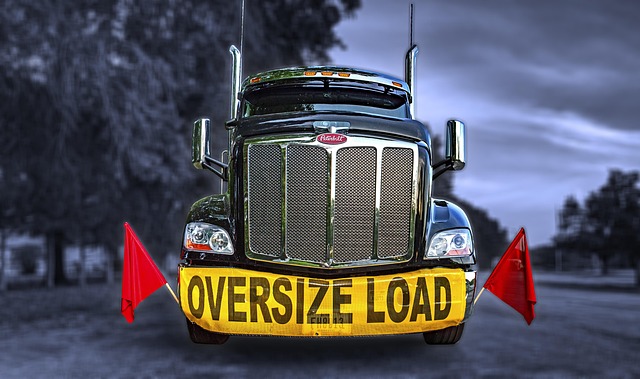Register Your Car: Step-by-Step Guide with VIN Verification
Looking to register your car in California? This comprehensive guide walks you through every step, from understanding key requirements to gathering essential documents. We’ll show you how to visit a D…….

Looking to register your car in California? This comprehensive guide walks you through every step, from understanding key requirements to gathering essential documents. We’ll show you how to visit a DMV or utilize online services efficiently. A crucial part of the process involves a Vehicle Identification Number (VIN) verification, ensuring your vehicle’s authenticity. Finally, learn about fees and receive your personalized license plate. Master these steps with our expert tips using a reliable dmv vin verifier for a seamless car registration experience in California.
- Understand California Car Registration Requirements
- Gather Necessary Documents for Car Registration
- Visit a DMV or Use Online Services for Registration
- Perform a Vehicle Identification Number (VIN) Verification
- Pay Car Registration Fees and Receive Your Plate
Understand California Car Registration Requirements

Before registering your car in California, it’s crucial to understand the state’s specific requirements. The California Department of Motor Vehicles (DMV) mandates that all vehicles operating within its borders be properly registered and have a current vehicle registration certificate. This process involves several key steps, including providing proof of insurance, paying applicable fees, and passing an emission test where required. Additionally, the DMV requires a Vehicle Identification Number (VIN) verifier to ensure the authenticity of your car’s VIN, which is essential for tracking ownership history and preventing fraud.
One convenient option to facilitate this process is through mobile VIN verification services. These services allow you to quickly and easily verify your vehicle’s VIN using a smartphone app or online platform. A mobile VIN inspection not only saves time but also offers the convenience of completing these requirements from the comfort of your home, making car registration in California more accessible for all residents.
Gather Necessary Documents for Car Registration

Before you start the registration process, it’s crucial to gather all the essential documents required by the California Department of Motor Vehicles (DMV). This includes your vehicle’s registration certificate from the previous state, proof of insurance, and a valid driver’s license. Additionally, you’ll need to provide the Vehicle Identification Number (VIN) for your car, which can be easily obtained through a DMV VIN verifier or even more conveniently, via a mobile VIN verification service.
A key step in the preparation is conducting a vin inspection, ensuring your vehicle’s history is clean and there are no outstanding issues. This can be done remotely through various online platforms or by scheduling an appointment for a physical inspection at a designated DMV location. Having these documents ready will streamline the registration process, making it quicker and less stressful for both you and the DMV staff.
Visit a DMV or Use Online Services for Registration

You have two convenient options when it comes to registering your car in California: visit a DMV office or utilize online services. If you prefer face-to-face interaction, heading down to your local DMV is a straightforward process. Bring along all necessary documents, including your vehicle’s registration from the previous state, proof of insurance, and identification. A DMV representative will guide you through the registration procedure, which includes verifying your Vehicle Identification Number (VIN) using a DMV VIN verifier.
For those who value time-saving efficiency, the California Department of Motor Vehicles (DMV) offers online registration as an option. You can initiate the process on their official website, where you’ll need to input crucial details like your vehicle’s make, model, and year. Following this, a mobile vin inspection or use of a VIN verifier is recommended to ensure accuracy. Once your information is confirmed, you can complete the transaction online, making registration quick and hassle-free.
Perform a Vehicle Identification Number (VIN) Verification

Before proceeding with registration, it’s crucial to perform a Vehicle Identification Number (VIN) verification. This step ensures that your vehicle is genuine and has not been reported as stolen or had its identity altered. You can conduct this check through a mobile VIN verifier or by visiting a DMV office for a vin inspection.
Using a mobile VIN verifier offers convenience, allowing you to cross-reference the vehicle’s history with just a few simple steps. Alternatively, a physical inspection at a DMV center provides an extra layer of verification. Regardless of your chosen method, ensuring your car’s VIN is legitimate is a vital step in the registration process.
Pay Car Registration Fees and Receive Your Plate

After completing your vehicle’s registration application at the DMV or online, the next step is to pay the associated fees. These fees vary depending on the type and age of your vehicle, so be sure to check the current rates. You can typically pay using a credit card, debit card, or cash. Once the payment is processed, you’ll receive official documentation confirming your registration. This usually includes a registration certificate and your new license plate(s).
Before driving your newly registered car, ensure that you securely attach the plates to your vehicle as per California’s regulations. The DMV offers guidance on proper plate placement for different types of vehicles. Remember, if you require a replacement or additional plates due to unique circumstances, you can often arrange this through the DMV, even after initial registration. For convenience, some residents opt for mobile vin inspection and verification services, ensuring a hassle-free process from the comfort of their homes.
Registering your car in California is a straightforward process that requires understanding the state’s requirements, gathering essential documents, and completing necessary verifications. By visiting a DMV or using their online services, you can efficiently navigate the registration process. Remember to perform a Vehicle Identification Number (VIN) verification through a trusted dmv vin verifier for accuracy. Once your application is approved, pay the required fees and receive your unique license plate, ensuring your vehicle complies with California’s regulations.







